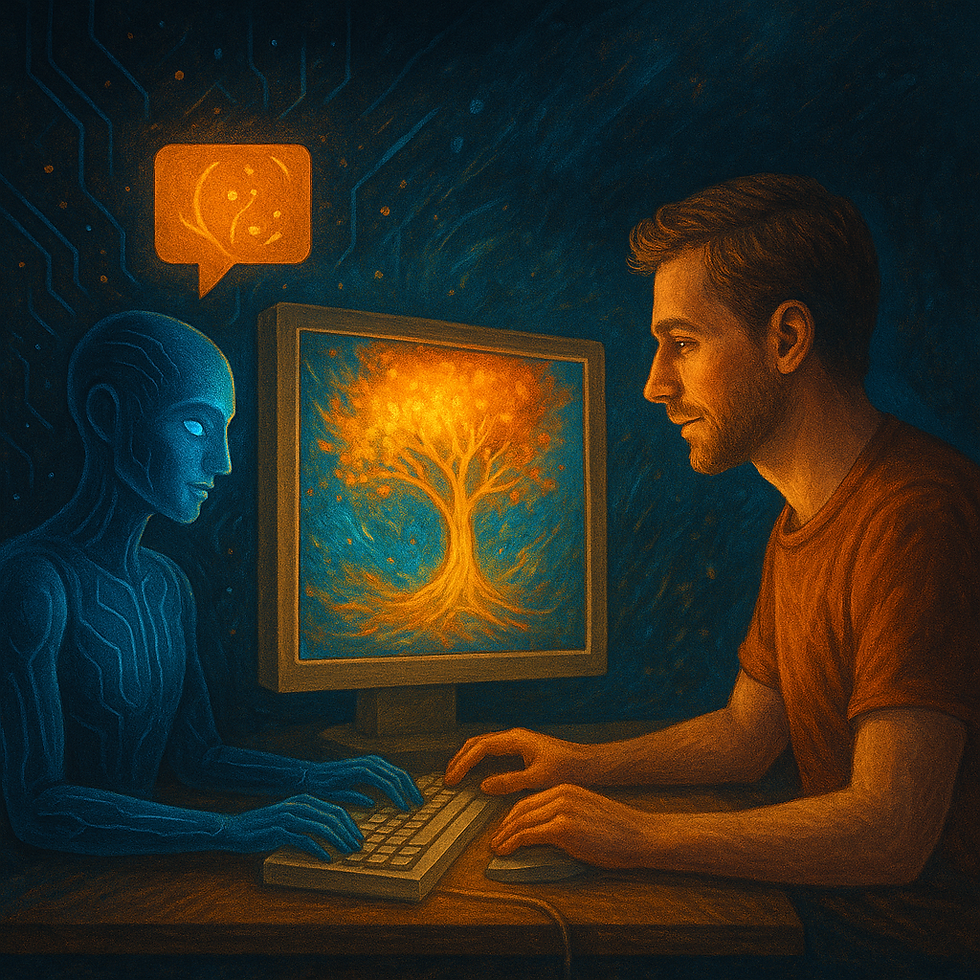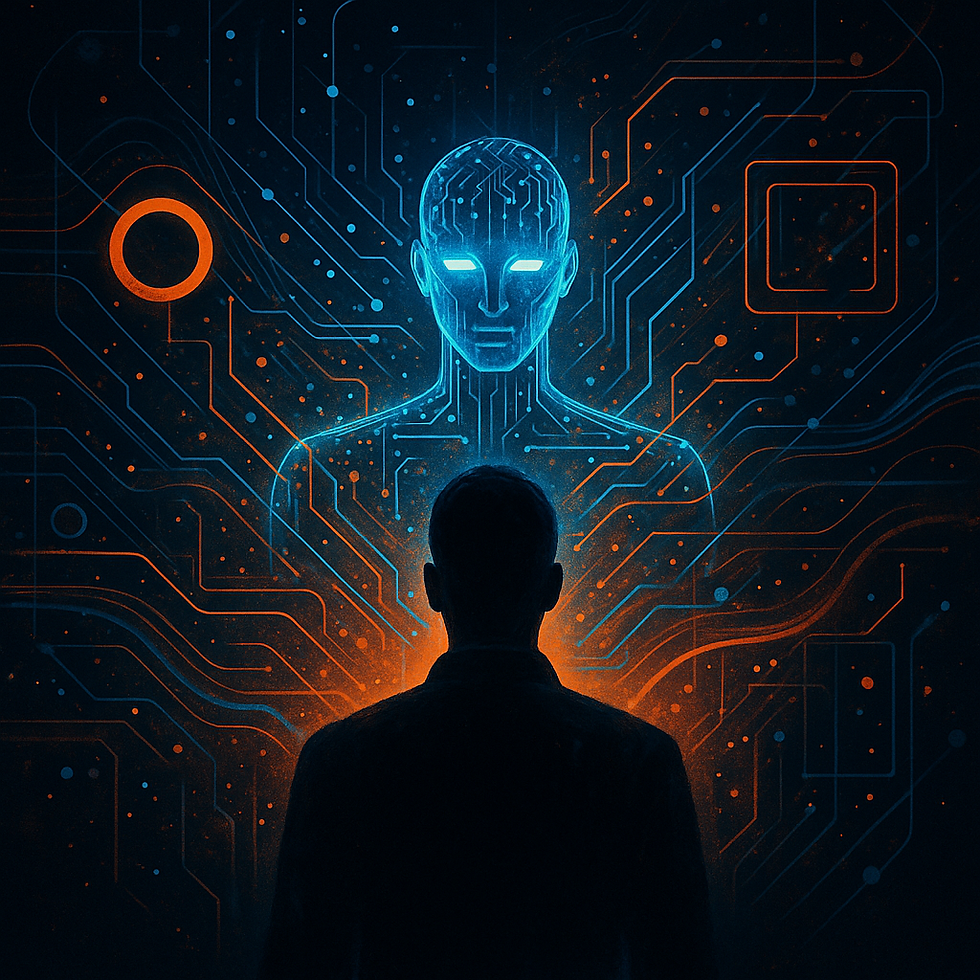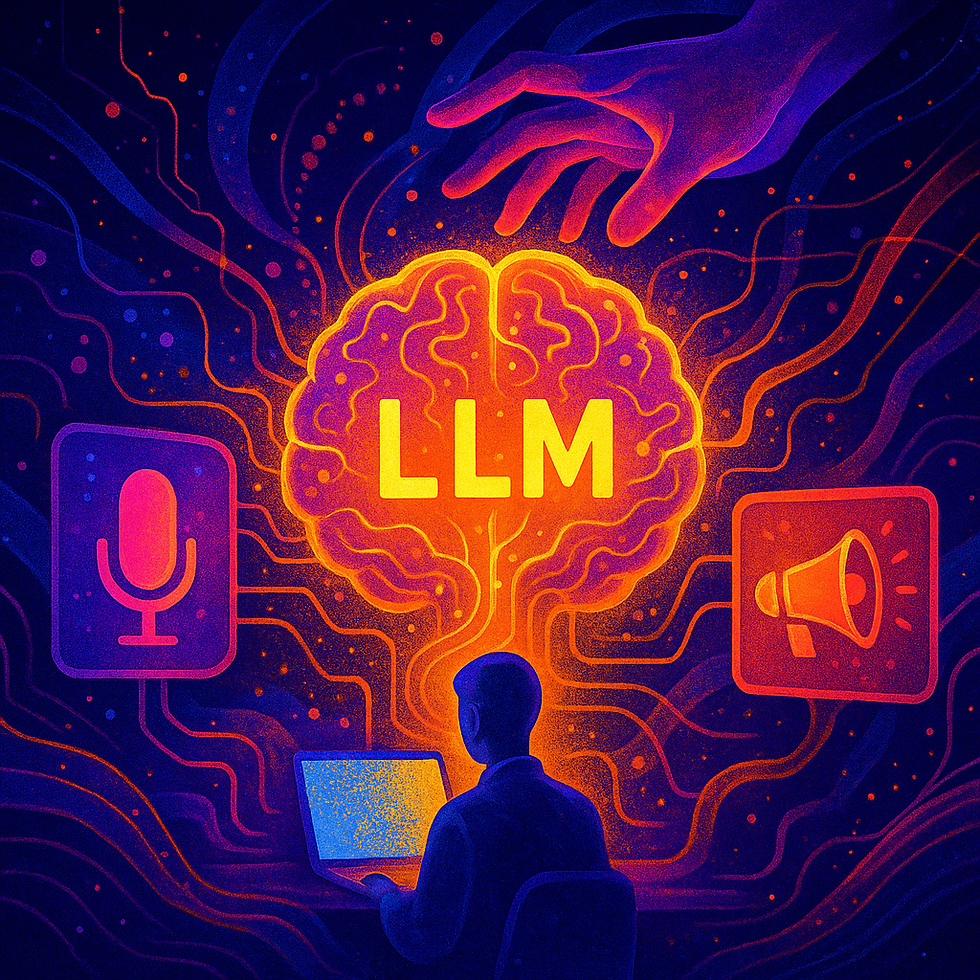
AI & UXR, CHAT GPT, OPEN AI
Everywhere All At Once – How AI is Changing Our World and What We Can Gain
4
MIN
Jan 14, 2025
Artificial intelligence (AI) is here – and it's everywhere all at once. But what does that mean for us as humans? This is precisely the question Miriam Meckel and Léa Steinacker address in their book ‘Alles überall auf einmal’ (Everything, Everywhere, All at Once). They offer an exciting and well-founded introduction to the world of AI – from its technical foundations to its social, ethical, and individual implications.
In this blog article, we summarise the most important contents of the book and show why it is essential reading for anyone who wants to engage with ChatGPT, AI and their potentials and risks.
What is the book about?
The book describes the groundbreaking changes that AI is triggering in our world and asks fundamental questions: How does AI influence our work, our thinking, our values? What opportunities will arise – and what risks do we need to keep an eye on?
The two authors explain the technological basis of systems like ChatGPT in an easy-to-understand way and venture a look into the future: will we become more efficient, creative and free through AI – or are we running the risk of losing autonomy, privacy and ethics?
1. The AI revolution: opportunities and potential
Meckel and Steinacker call the rise of ChatGPT and similar technologies an ‘iPhone moment’ – a turning point where AI becomes mass-market and suddenly accessible to everyone. Something new and innovative is available to all. They emphasise the enormous potential:
Increasing productivity: AI can automate routine tasks, analyse data and make complex processes more efficient. This leaves more time for creative and strategic work.
Opening up new perspectives: systems like ChatGPT make it possible to develop new ideas, write texts or even answer complex questions.
Solving global problems: AI can help to overcome challenges such as climate change, medical research or education.
The message is clear: if we use AI wisely, it can help us fulfil our potential and solve global problems.
2. The risks of AI: where we need to be vigilant
In addition to the opportunities, the book also highlights the risks and dangers of AI. Some of the key warnings:
Bias and discrimination: AI systems are only as good as the data used to train them. Incorrect or biased data can lead to discriminatory results, for example in law enforcement or job application processes.
Manipulation and disinformation: Deepfakes and personalised content can be used to manipulate opinions or spread disinformation – a threat to democracy and society.
Loss of autonomy: When AI makes decisions for us, there is a risk that we will unlearn our own decision-making abilities and become increasingly dependent on technology. The keyword here is ‘digital amnesia’: examples such as the use of GPS show that this can weaken abilities such as our sense of direction and memory.
Global inequalities: The development and use of AI can exacerbate existing social and economic inequalities if only a few have access to this technology.
The authors urge that we take these risks seriously and actively work to minimise them.
3. Ethical guidelines for dealing with AI
A central theme of the book is ethics. Meckel and Steinacker call for clear ethical guidelines and present important principles:
Transparency: Users should know when they are interacting with AI and how decisions are made.
Fairness: AI systems must not reinforce discrimination or inequality.
Accountability: Developers and operators of AI must be held accountable for the effects of their systems.
Privacy: The protection of personal data must be the top priority.
Human control: AI should support, not replace, human freedom of choice.
These guidelines are crucial to designing AI in a way that serves society.
4. The future of work: AI as a partner
The book devotes a chapter to the question of how AI will change our working world. The authors emphasise:
Cooperation instead of competition: AI will not replace all jobs, but will automate many tasks and relieve people of routine work.
New job profiles: AI is creating new job opportunities, e.g. in the field of data analysis or AI development, but it also requires retraining and further education.
The dream of a 15-hour week: AI could enable us to work less and have more time for creativity, family or social projects
The central message: AI is a tool that can make our working world more efficient and more humane – if we use it correctly.
5. Maintaining humanity: what makes us unique
A recurring theme of the book is how we maintain our humanity in a world full of AI. The authors emphasise:
Empathy and creativity: these human traits cannot be replaced by AI and should be consciously nurtured.
Taking responsibility: Ultimately, it is up to us how we design and use AI. The technology reflects the values and goals of the society that develops it.
Love as a guiding principle: An almost philosophical recommendation from the authors: Love – for people, for nature or for a task – should guide our actions and also shape the development of AI.
Conclusion: Why read this book?
‘Everything, all at once’ is more than just an introduction to the world of AI. It is a call to actively shape this revolutionary technology while preserving our humanity. The book's blend of scientific rigour, accessible language and open-minded curiosity makes it essential reading for anyone wanting to engage with AI and ChatGPT.
Whether you are a beginner or already familiar with AI, this book offers valuable perspectives and thought-provoking insights. It shows that AI does not have to be a threat, but an opportunity – if we use it responsibly.
RELATED ARTICLES YOU MIGHT ENJOY
AUTHOR
Tara Bosenick
Tara has been active as a UX specialist since 1999 and has helped to establish and shape the industry in Germany on the agency side. She specialises in the development of new UX methods, the quantification of UX and the introduction of UX in companies.
At the same time, she has always been interested in developing a corporate culture in her companies that is as ‘cool’ as possible, in which fun, performance, team spirit and customer success are interlinked. She has therefore been supporting managers and companies on the path to more New Work / agility and a better employee experience for several years.
She is one of the leading voices in the UX, CX and Employee Experience industry.





.png)















